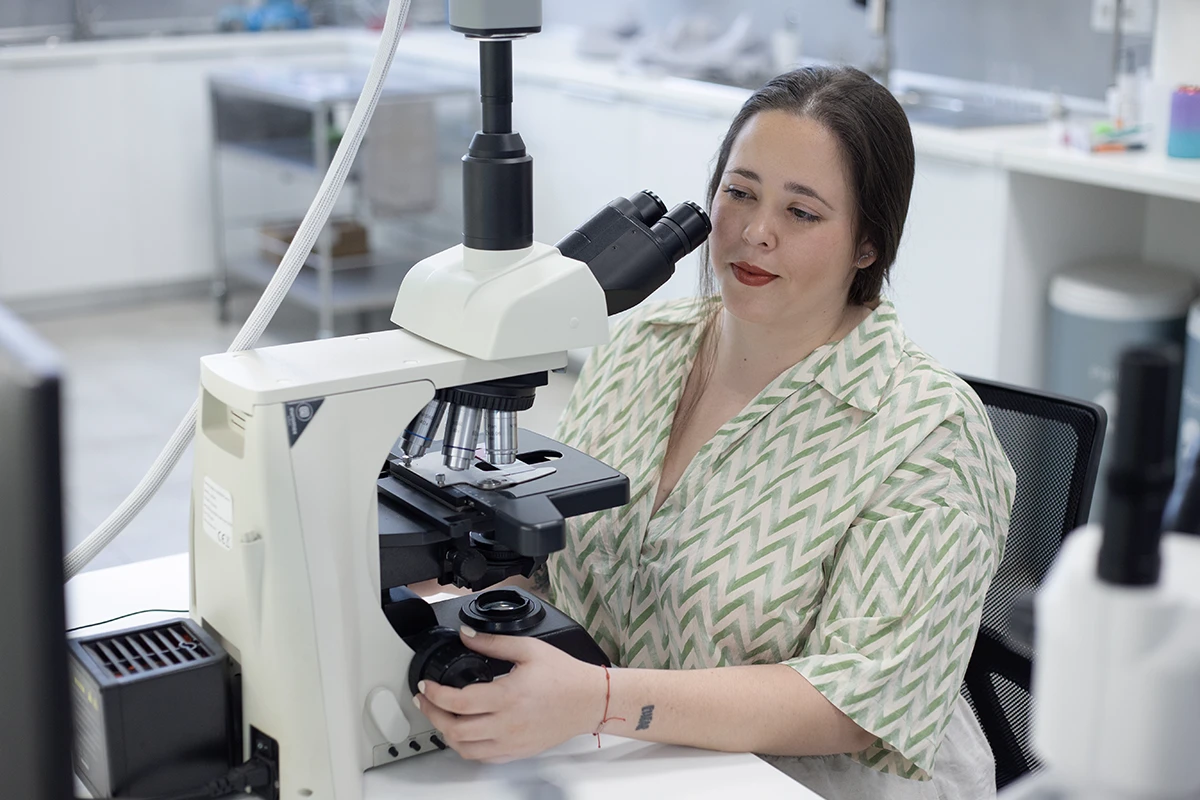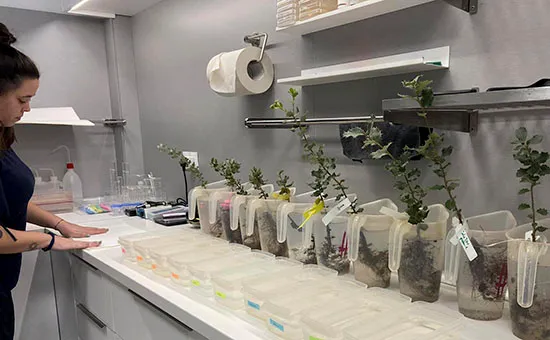Quality evaluation of nursery plants colonized by truffle species
Once the decision has been made to establish a new truffle plantation, it is of the utmost importance that the farmer has an accurate idea of the average amount of truffle mycorrhizae present in the seedlings to be planted in the field. It is also essential to know if other contaminant mycorrhizal fungi are present in the seedlings and in which percentage.
The quality of the root and aerial system of the plant and its health status must also be assessed. These will determine the chances of survival of the plants in the field once the plantation has been established.
To do this, the root system must be cleaned and observed and the mycorrhizae species present in the plants must be identified and counted.
The plants to be analyzed are obtained by taking random samples from the batch or batches of nursery plants with which the plantation will be done.
Which mycorrhizal seedling parameters can endanger the success of your truffle plantations?
- Low presence of the truffle fungus (low percentage of truffle mycorrhizae).
- High amounts of contaminant fungi that compete for the root tips with the truffle fungus.
- Presence of dangerous mycorrhizal fungi. Most usually other truffle species (Tuber aestivum, Tuber brumale) but also highly competitive wild fungi like Trichophaea woolhopeia.
In order to evaluate seedling quality, the root system is observed under the microscope using different techniques depending on the fungal species present.

The client will be provided with a seedling analysis report which will include:
- Percentage of roots colonized by the truffle fungus (Tuber melanosporum or Tuber aestivum/Tuber uncinatum).
- Total amount of colonized root tips.
- Percentage of roots colonized by other mycorrhizal fungi (contaminants).
- Species of contaminant fungal species present in the truffle plants.
- Forestry and health quality (following the parameters of morphological plant quality established by the European Directive 1999/105/CE).
- Conclusions and recommendations.
The evaluation method used by MicoLab is the one developed by Fisher and Colinas (University of Lleida), last updated in 2014. This is a time-consuming but very robust method, which is nowadays the one that provides us with the most accurate data, as shown by the research studies carried out by Andrés Alpuente et al.

At MicoLab the cleaning, counting and microscopic identification works are carried out following very rigorous labeling and microscopic preparation protocols designed by our team after more than ten years of analytical work. As part of the analysis process, we take images of all the plants and their clean root systems as well as of the microscopic characters and species found in each plant. Although some images are included in the reports, hundreds of them are taken for every batch. These pictures are saved on several devices with backup and are available to the client who requests them for their personal use, as a verification of the work carried out or to be used for legal purposes.

